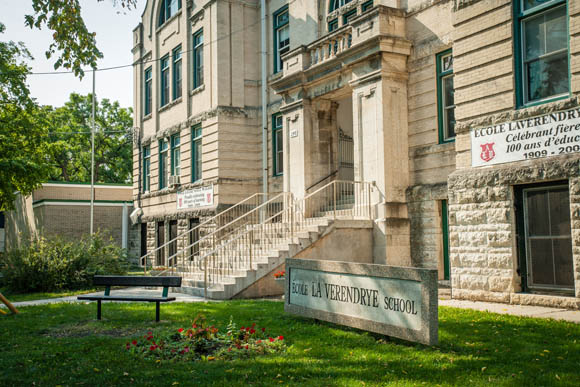About/History of LaVérendrye
November 22, 2024
At the beginning of the 20th century, the School Board agreed that a new school was needed in the Fort Rouge area to help ease the overcrowding of the existing Fort Rouge School. Plans were accordingly prepared by the Commissioner of Buildings, submitted, accepted, and tenders called for the erection of a building on the site in Fort Rouge, block 57, to be named LaVerendrye School. Messrs. Saul & Irish won the building contract for $69,920 while the installation of heating and ventilation went to the Steam Power & Heating Co. at $10,200. LaVerendrye was built with a solid stone and brick construction, fireproof stairways, and was fully modern in all respects for the time. The cornerstone of the school was placed by Mr. F.C. Hubbard, Trustee for Ward 1 on July 7, 1909. LaVerendrye was planned with the view of providing suitable rooms in which to carry on the several branches of school work which up to that time were sanctioned by the Board, but did not include gymnasiums, swimming baths, bowling alleys etc. The Board provided research that stated “the idea is growing that such features do not assist in the actual work of the school.”



